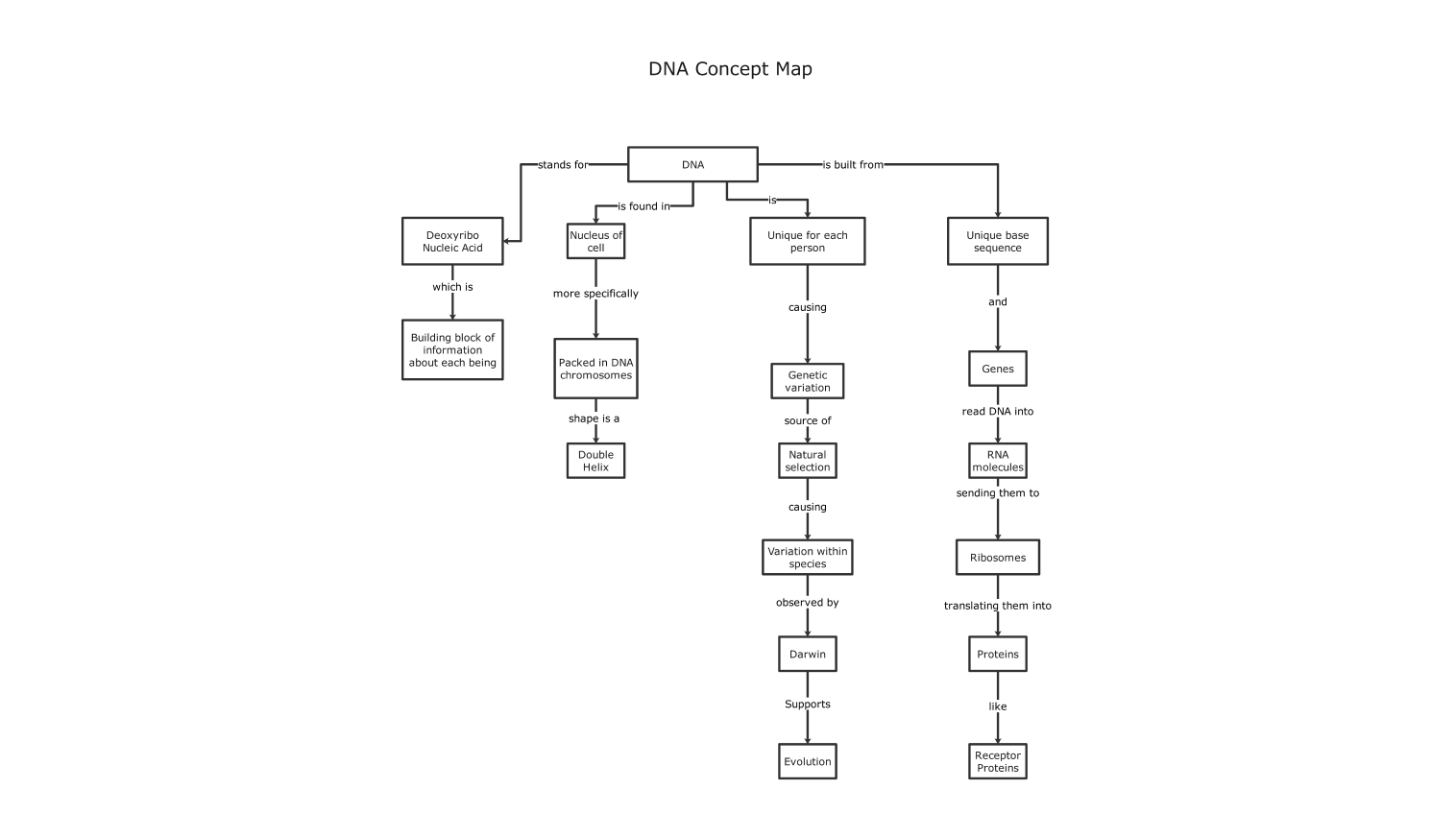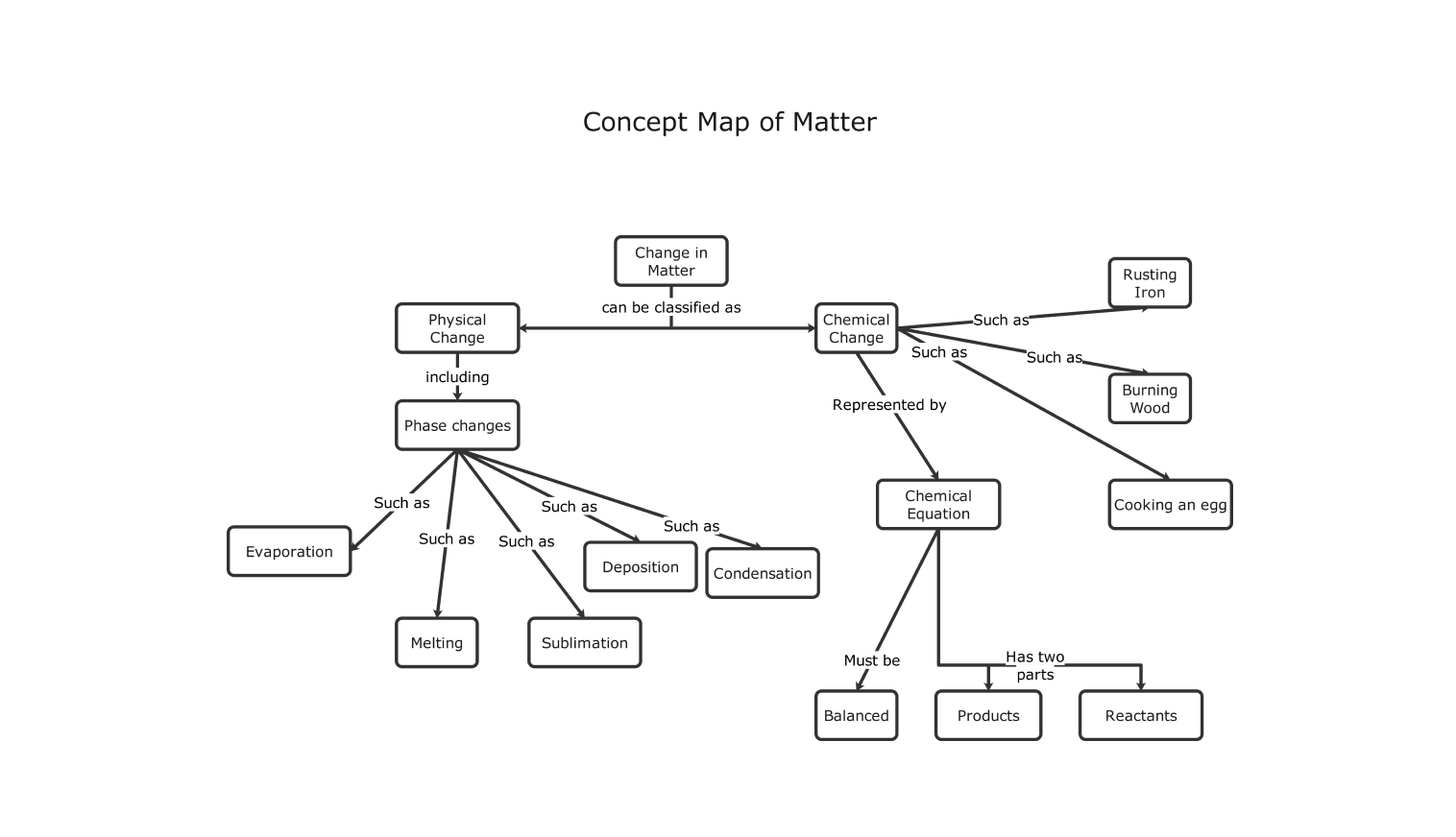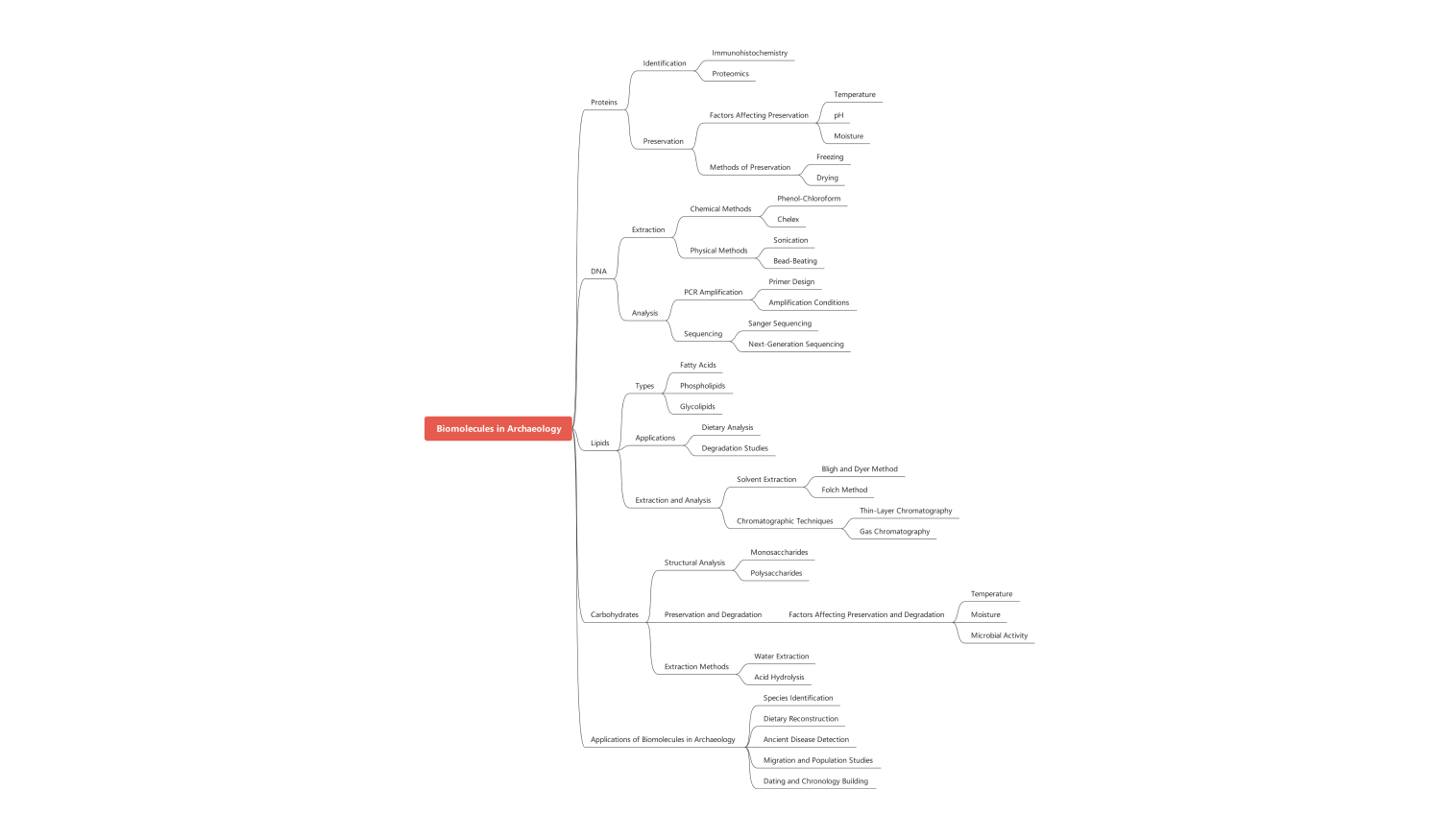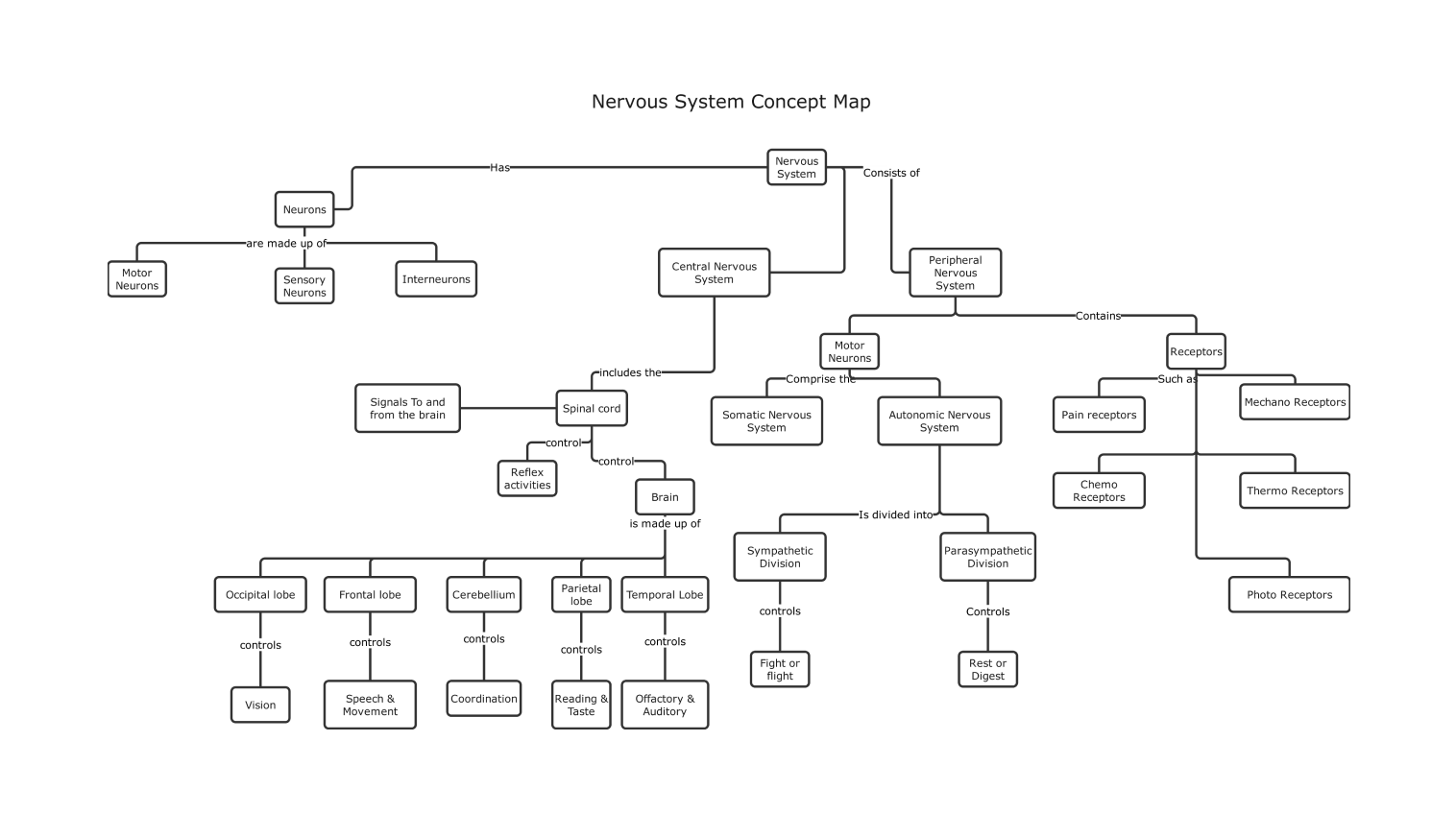- All templates
- Concept map templates
- DNA concept map
About this DNA concept map
This concept map illuminates DNA's core properties and far-reaching impacts, connecting its structural foundations to genetic functions and evolutionary processes through clear relational pathways.
Structurally, DNA stands for Deoxyribo Nucleic Acid and serves as the building block of biological information for all organisms. It resides in the cell nucleus, packaged into chromosomes and folded into a double helix shape. Each individual’s DNA carries a unique base sequence defining personal genetic identity, with embedded genes directing molecular processes: DNA transcribes into RNA, which travels to ribosomes to translate into proteins like receptor proteins.
Functionally, DNA's uniqueness generates genetic variation — a critical driver of natural selection. This variation creates diversity within species, a phenomenon observed by Darwin that ultimately supports evolutionary theory. The map bridges molecular mechanisms like base pairing and gene expression with ecological principles including natural selection and species adaptation.
As a learning resource, this map clarifies how DNA's structural features — the double helix and chromosomal organization — enable its roles in heredity, protein synthesis and evolutionary change, offering a cohesive framework for understanding life's molecular and macrobiological dimensions.
Related templates
Get started with EdrawMax today
Create 210 types of diagrams online for free.
Draw a diagram free Draw a diagram free Draw a diagram free Draw a diagram free Draw a diagram free


